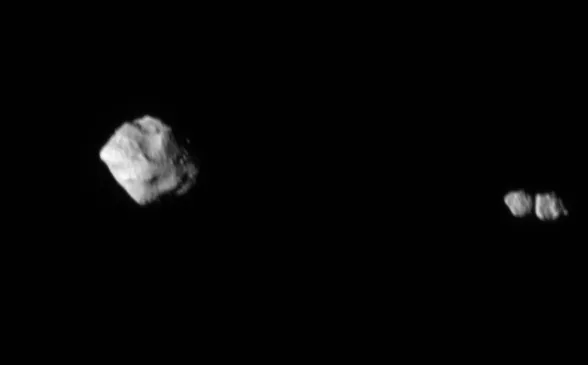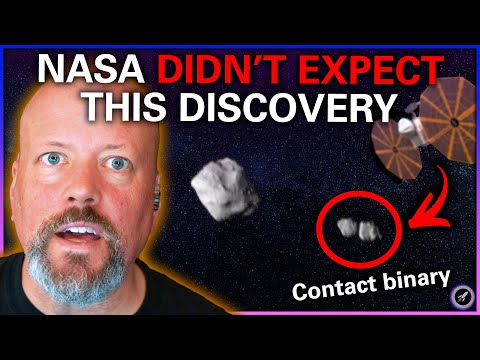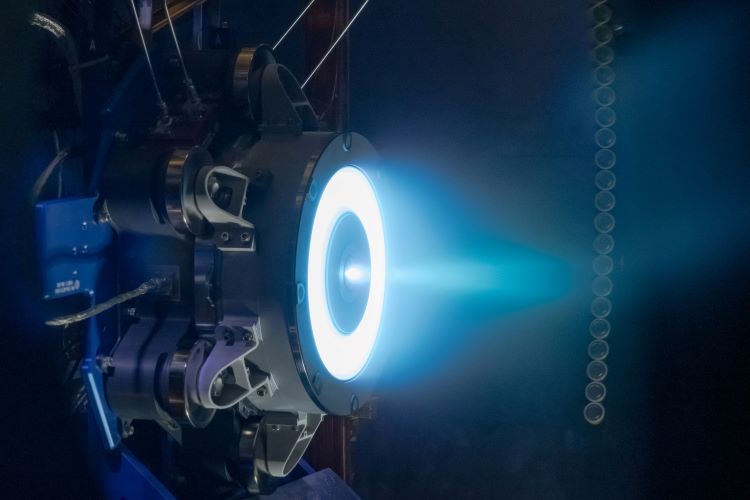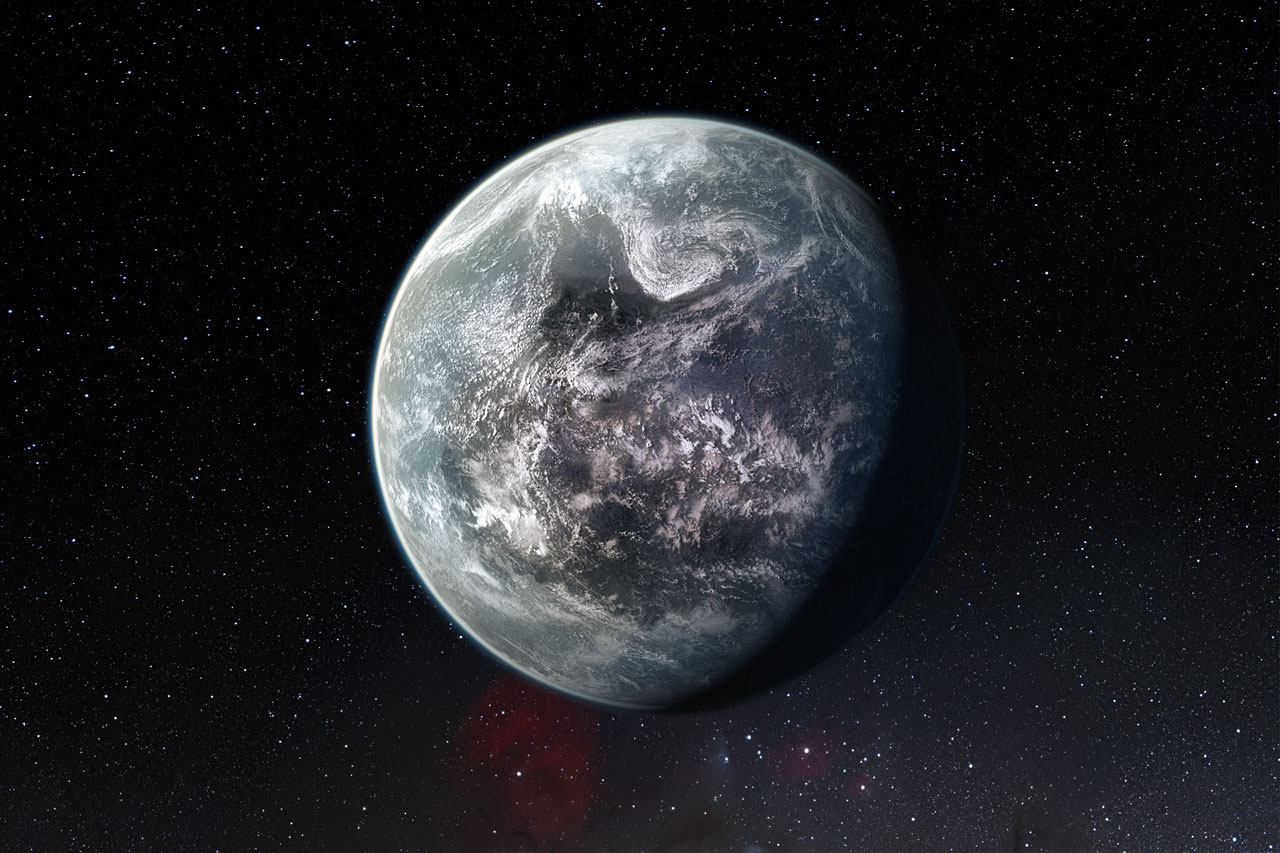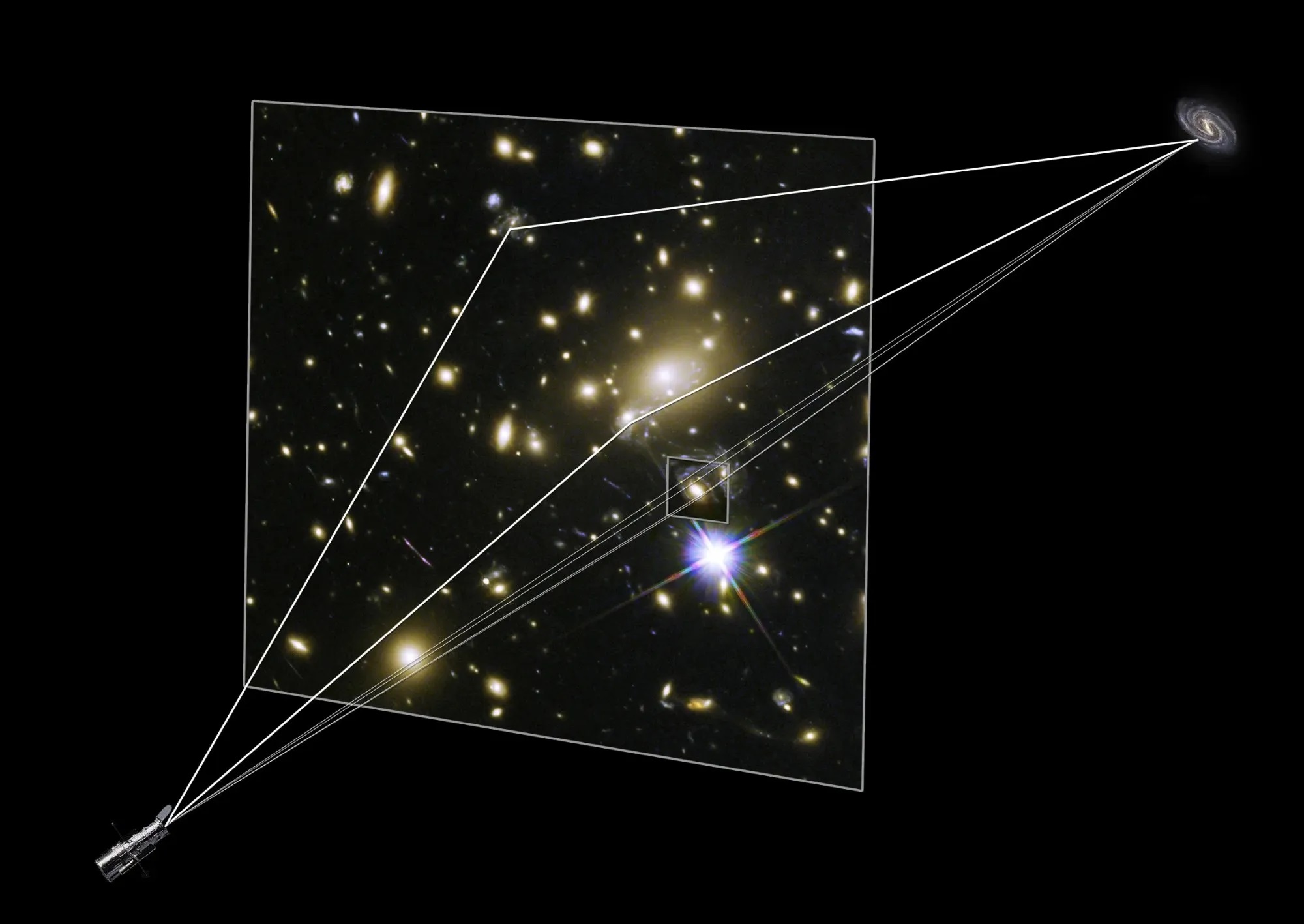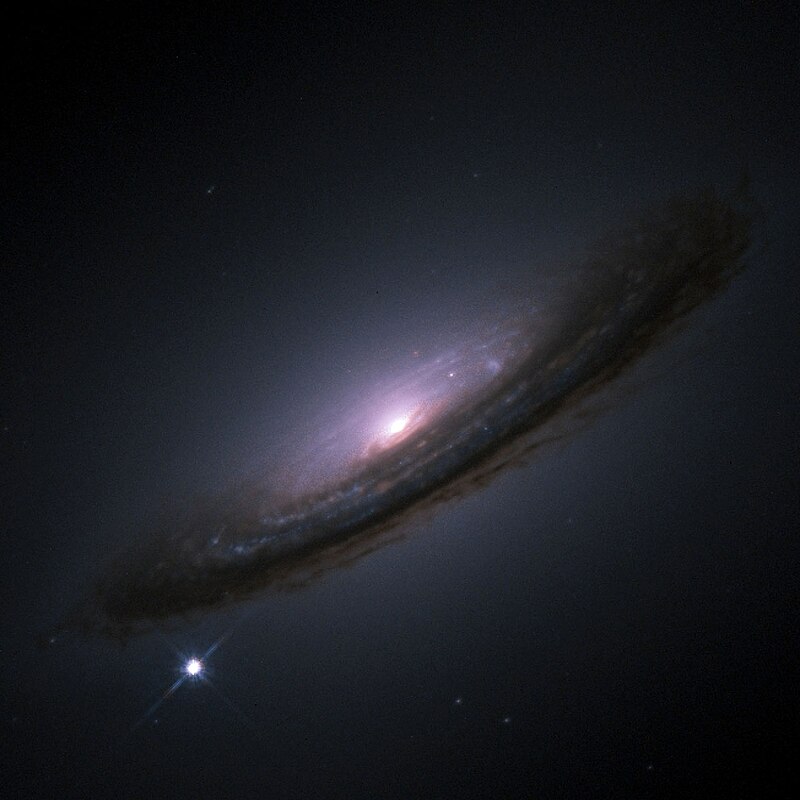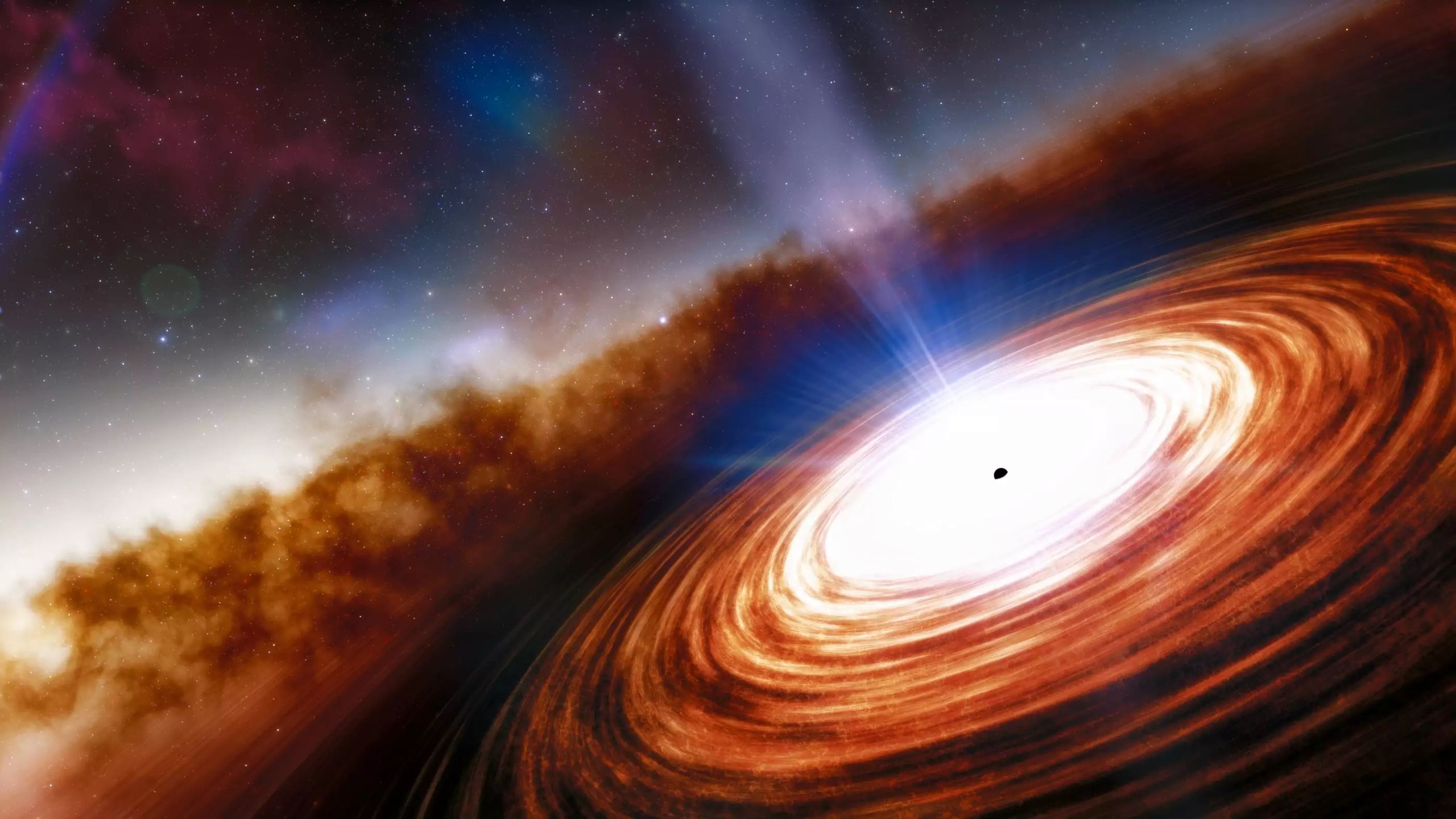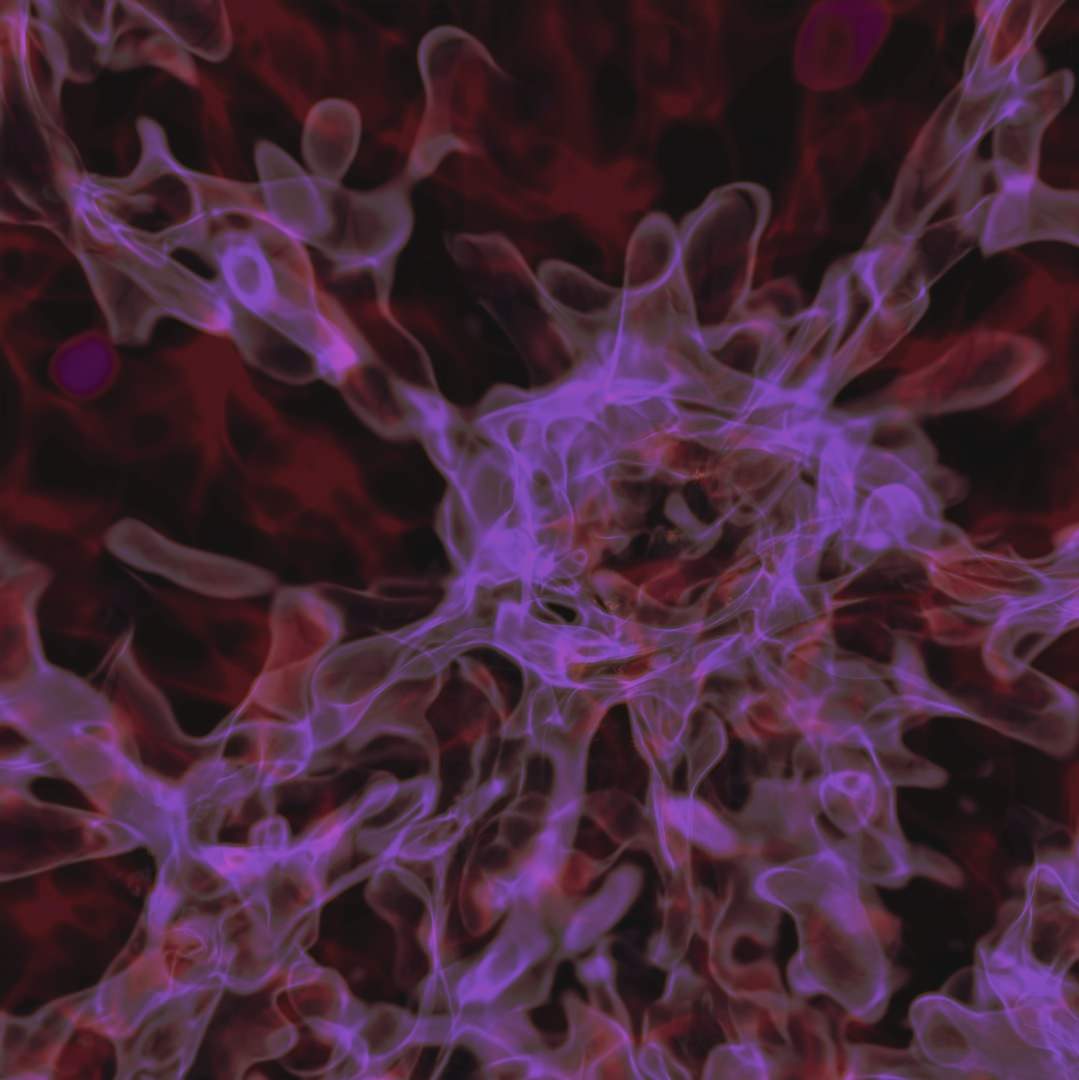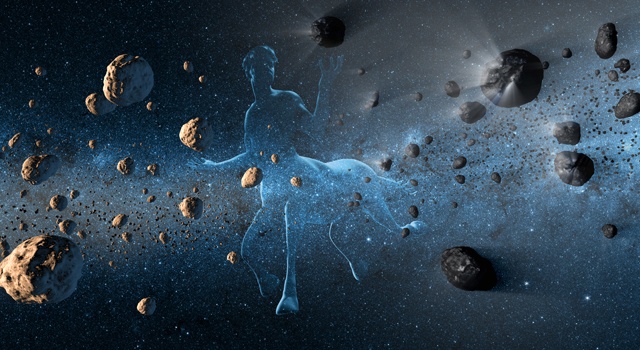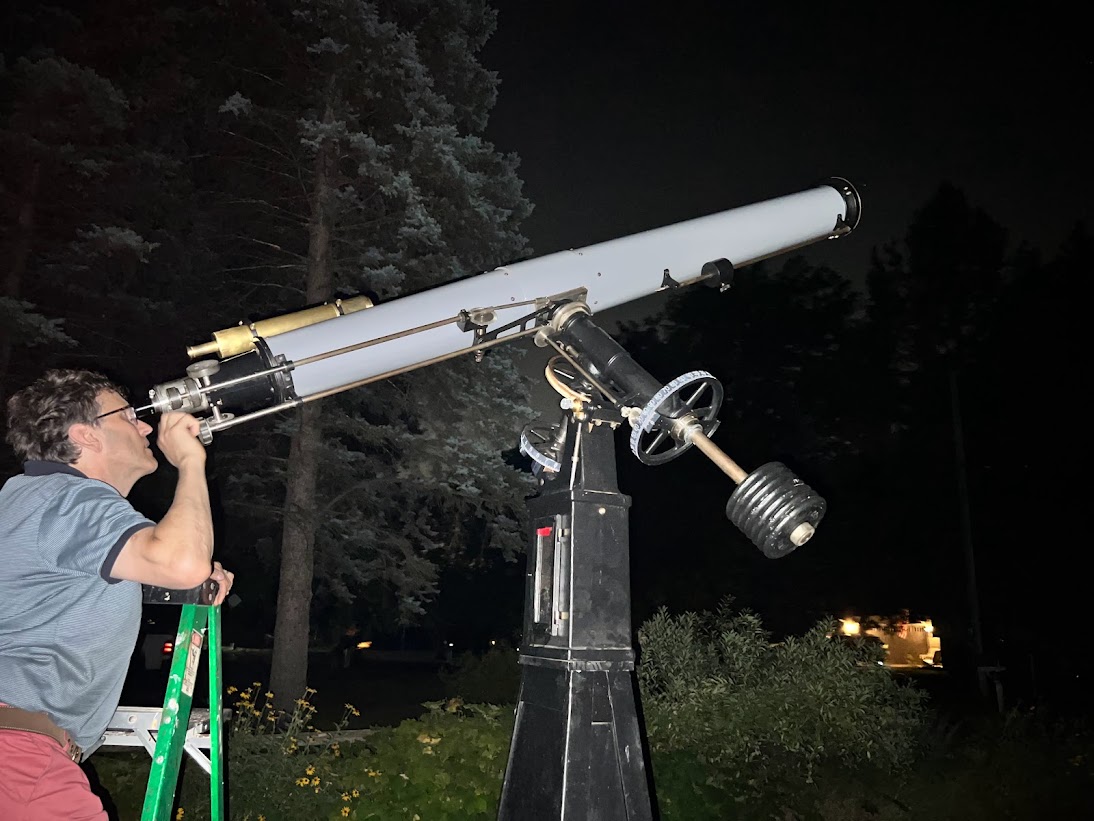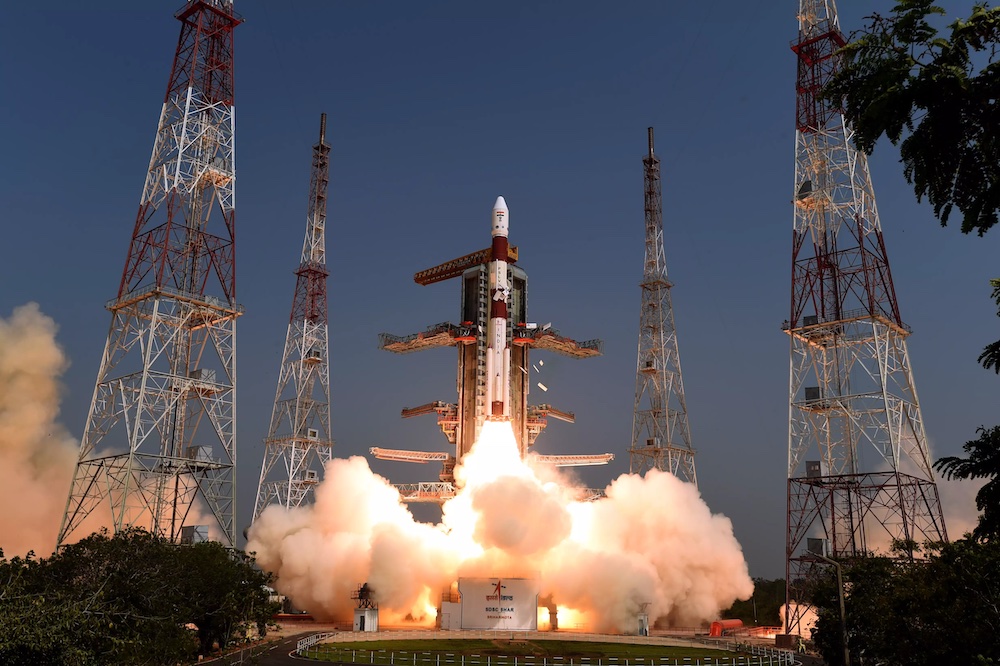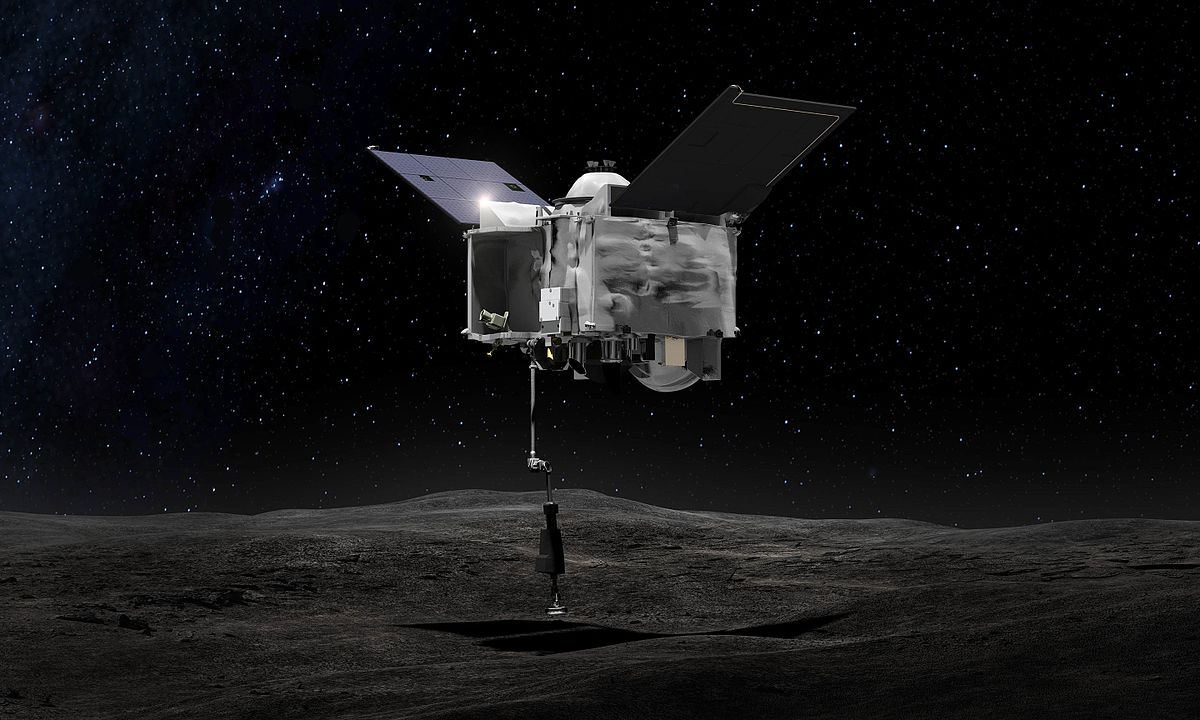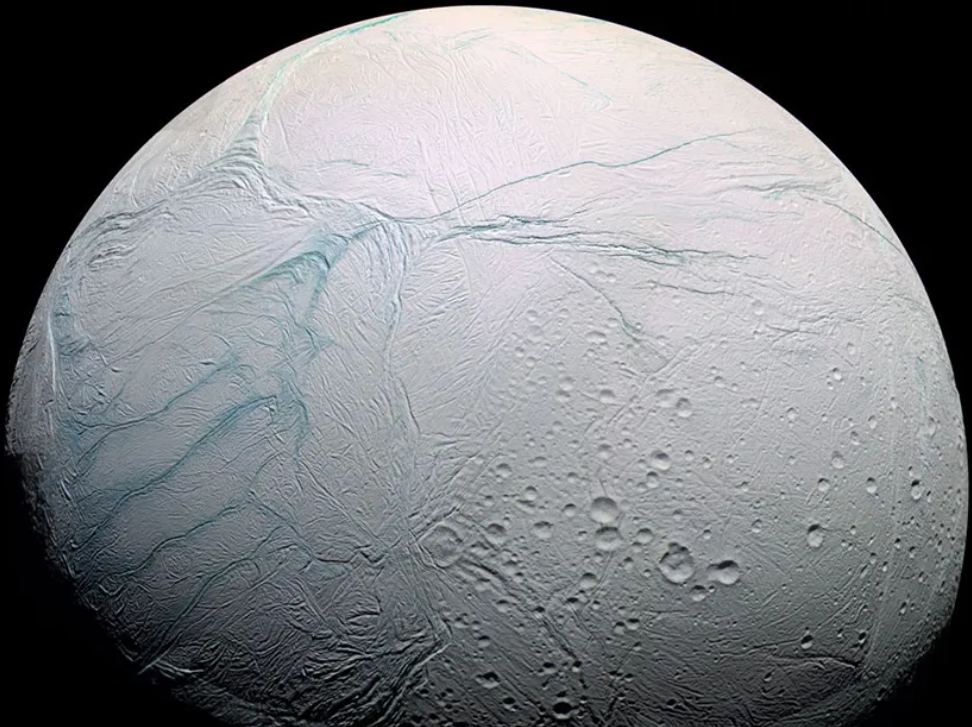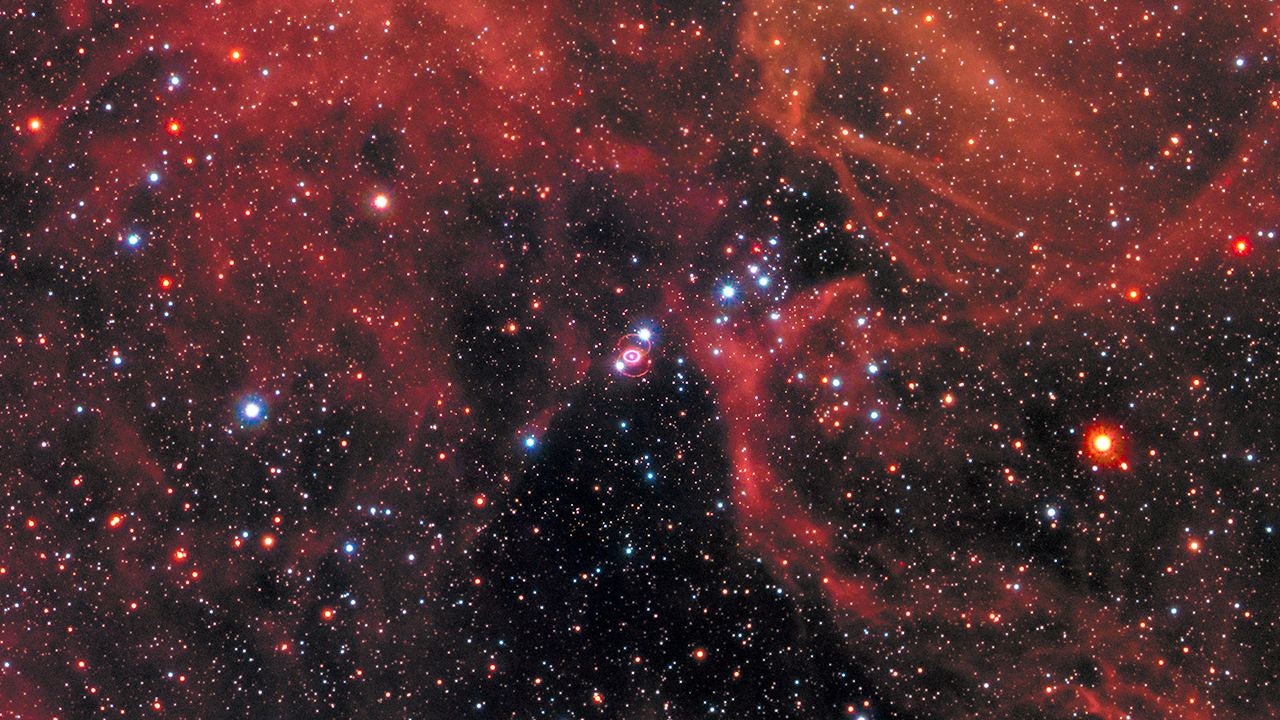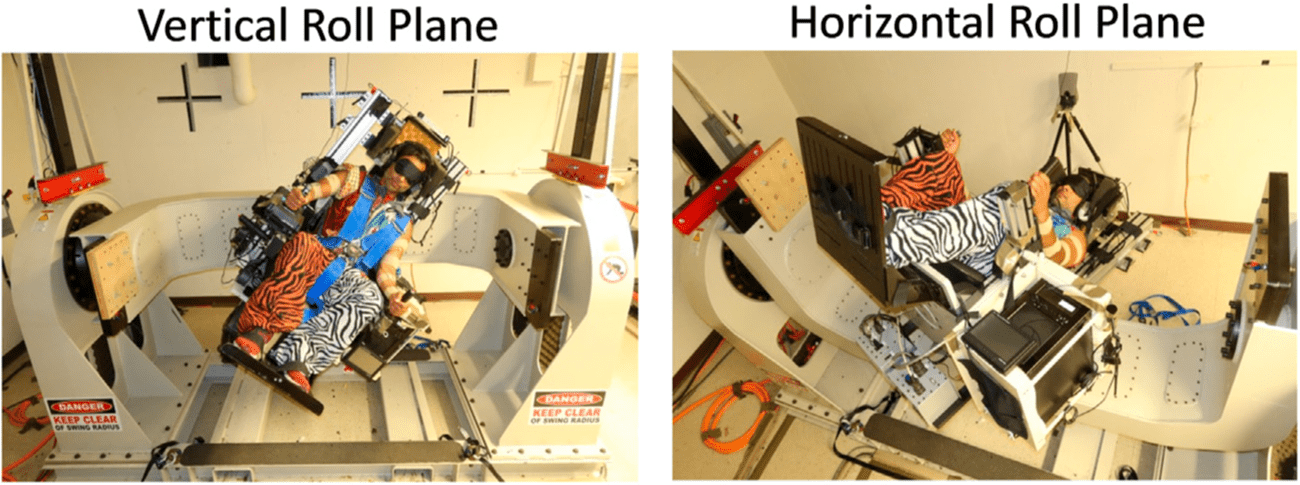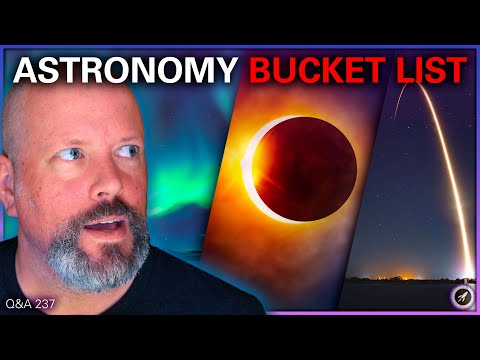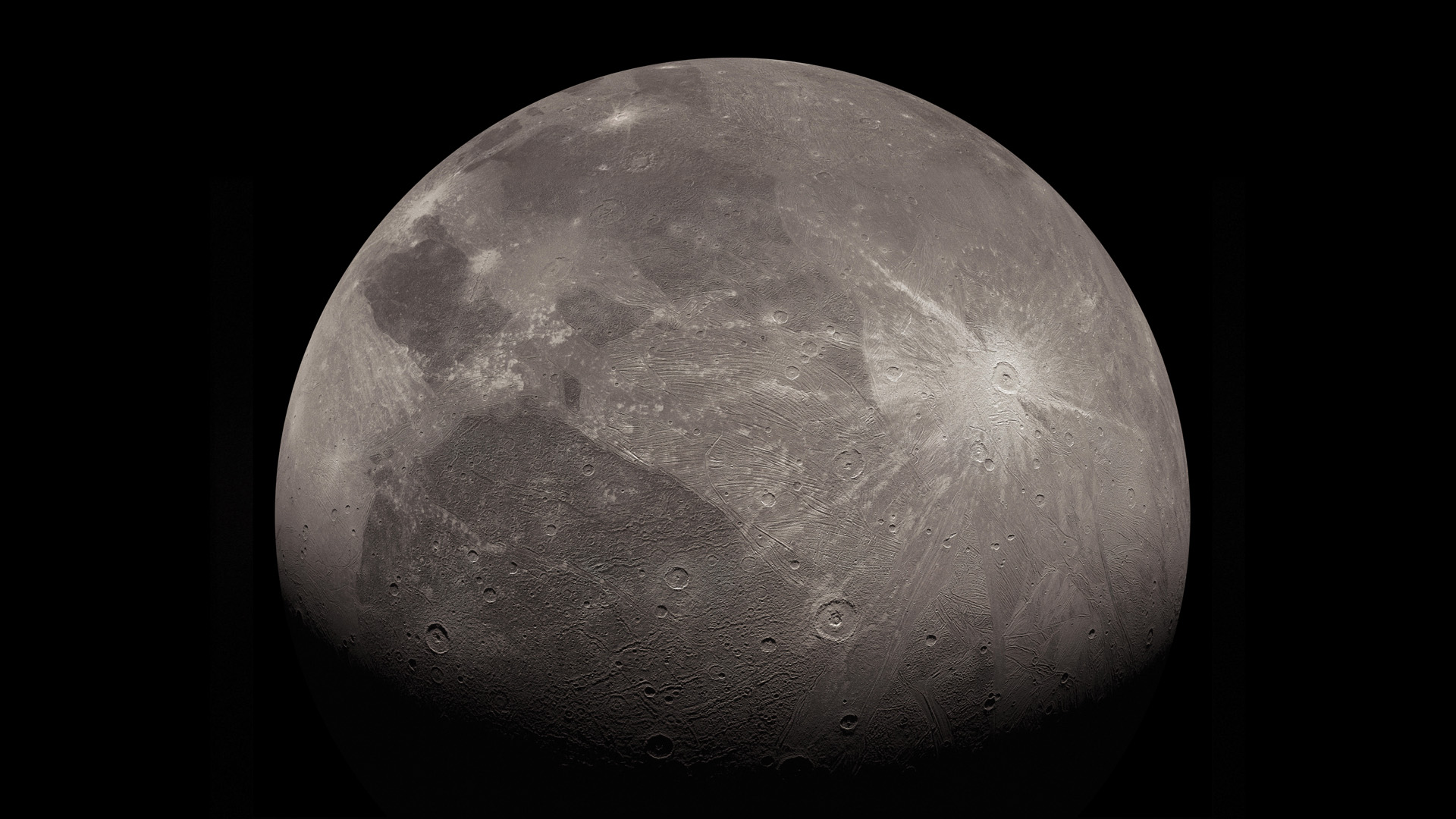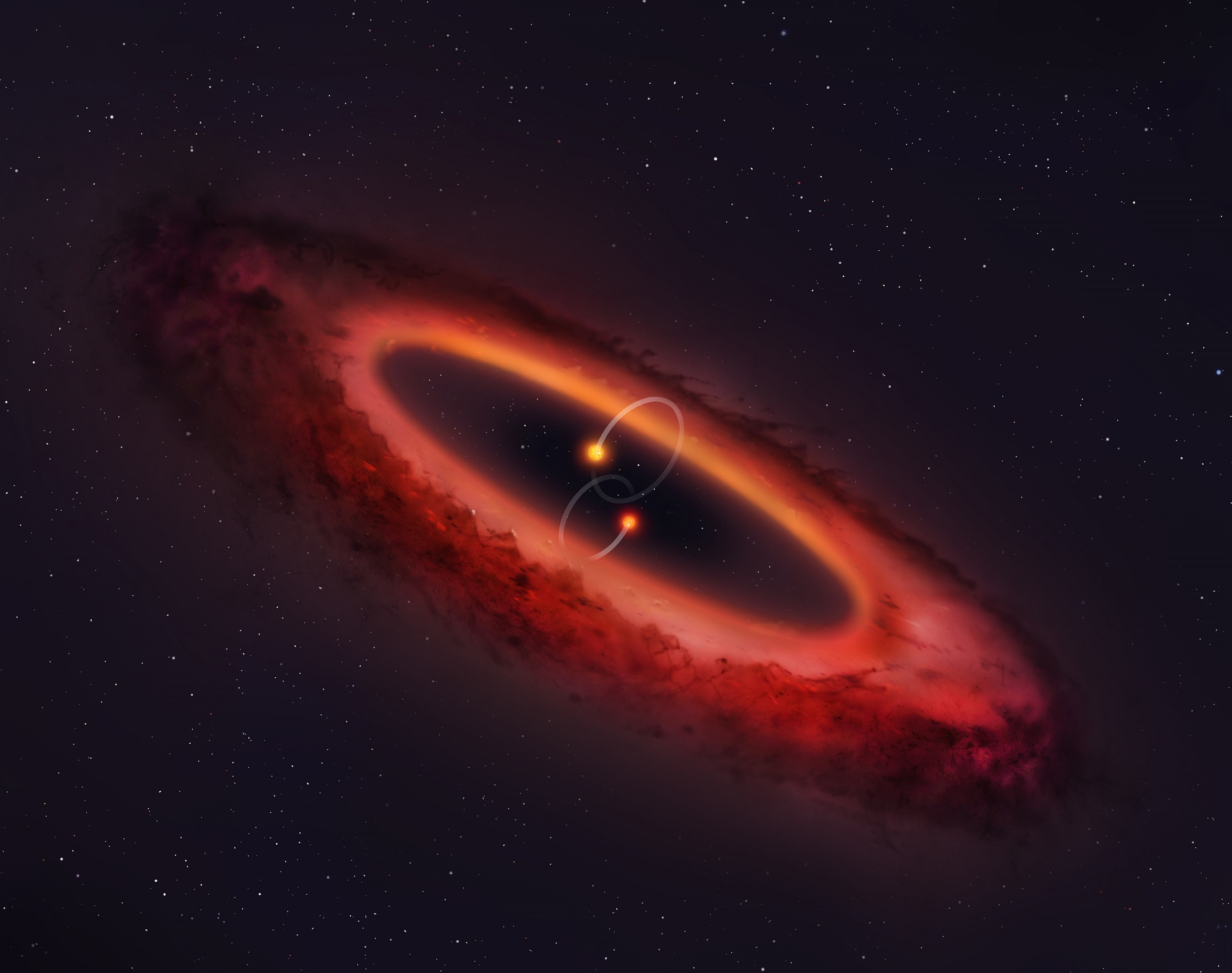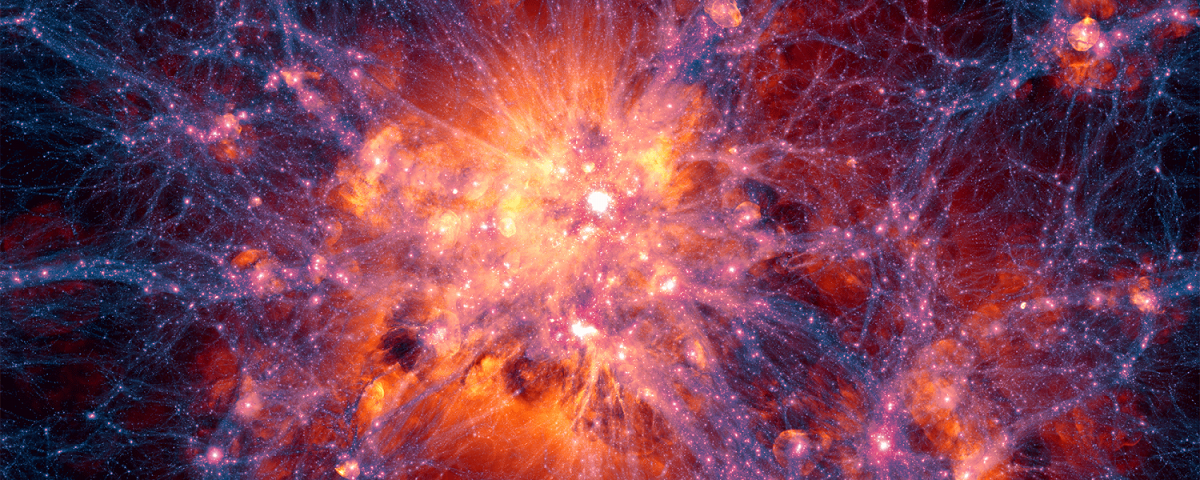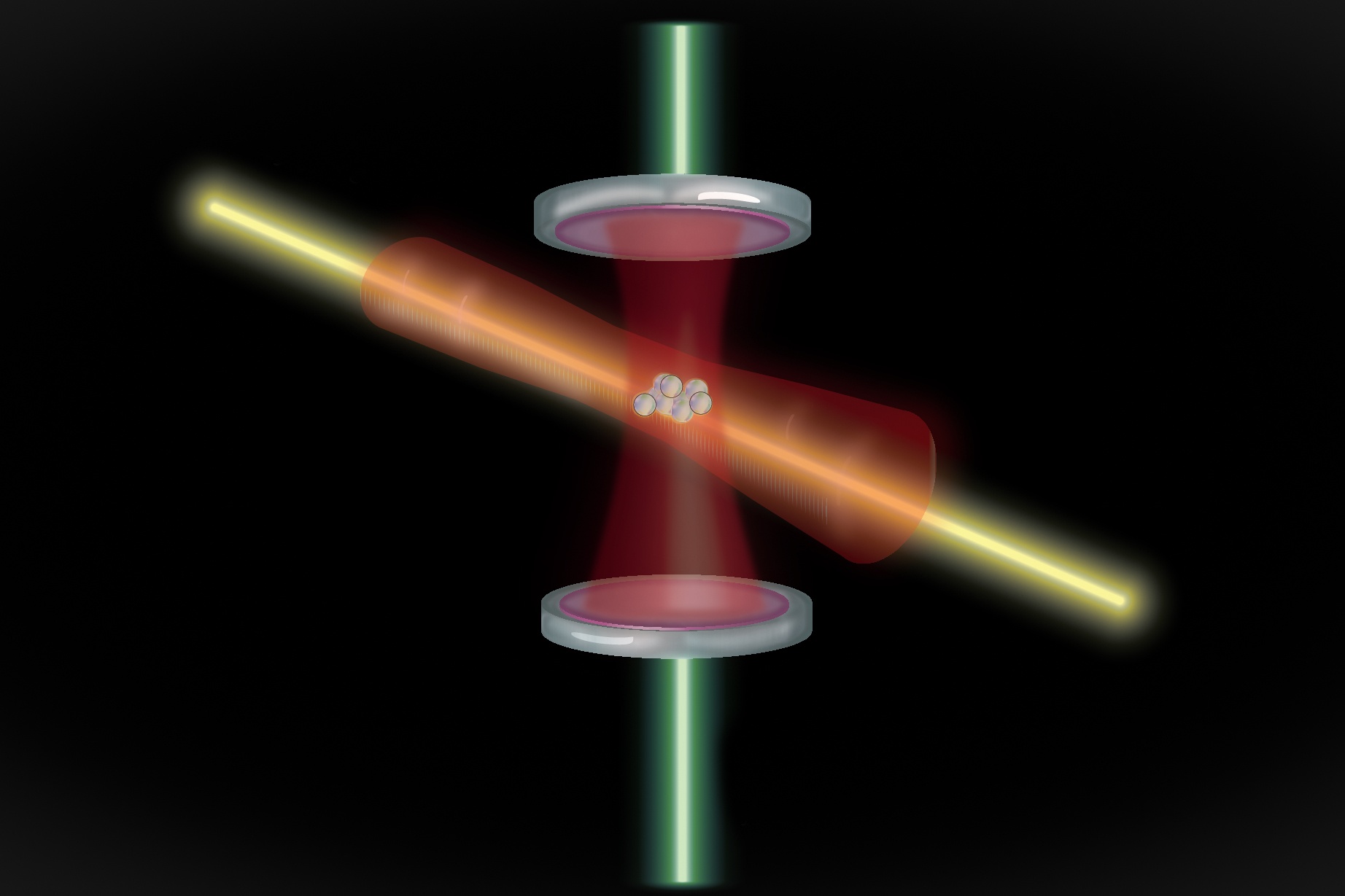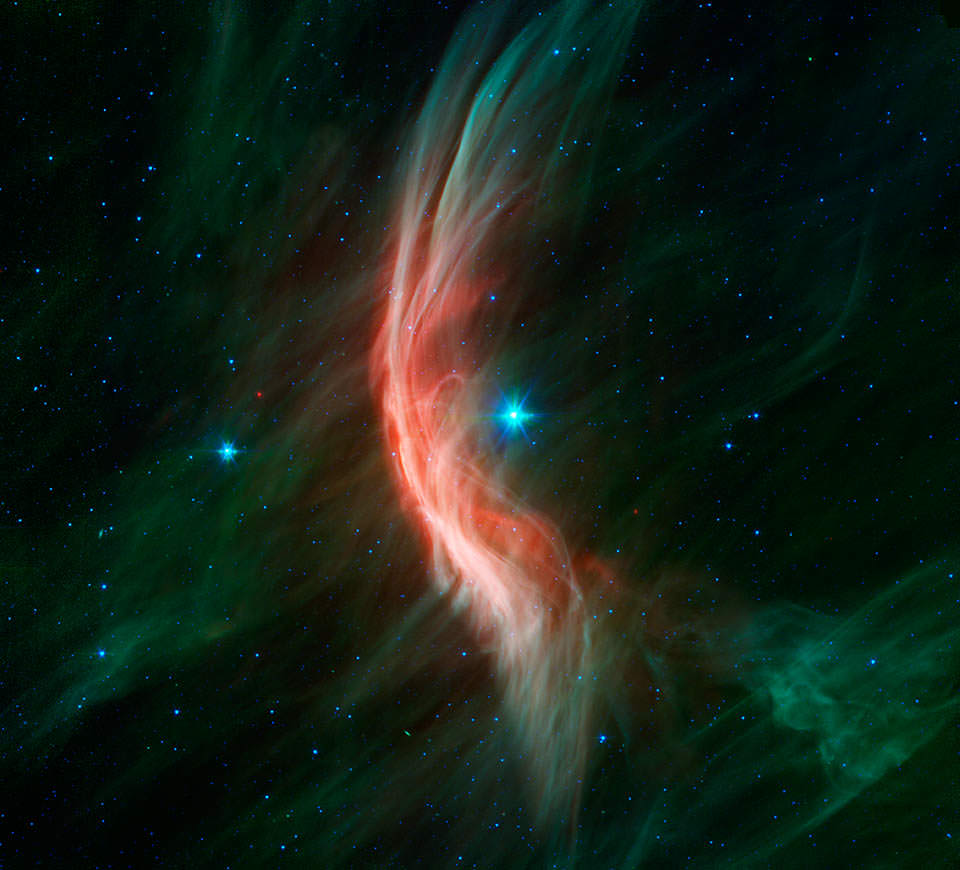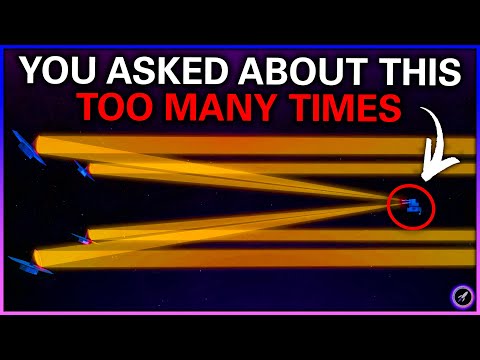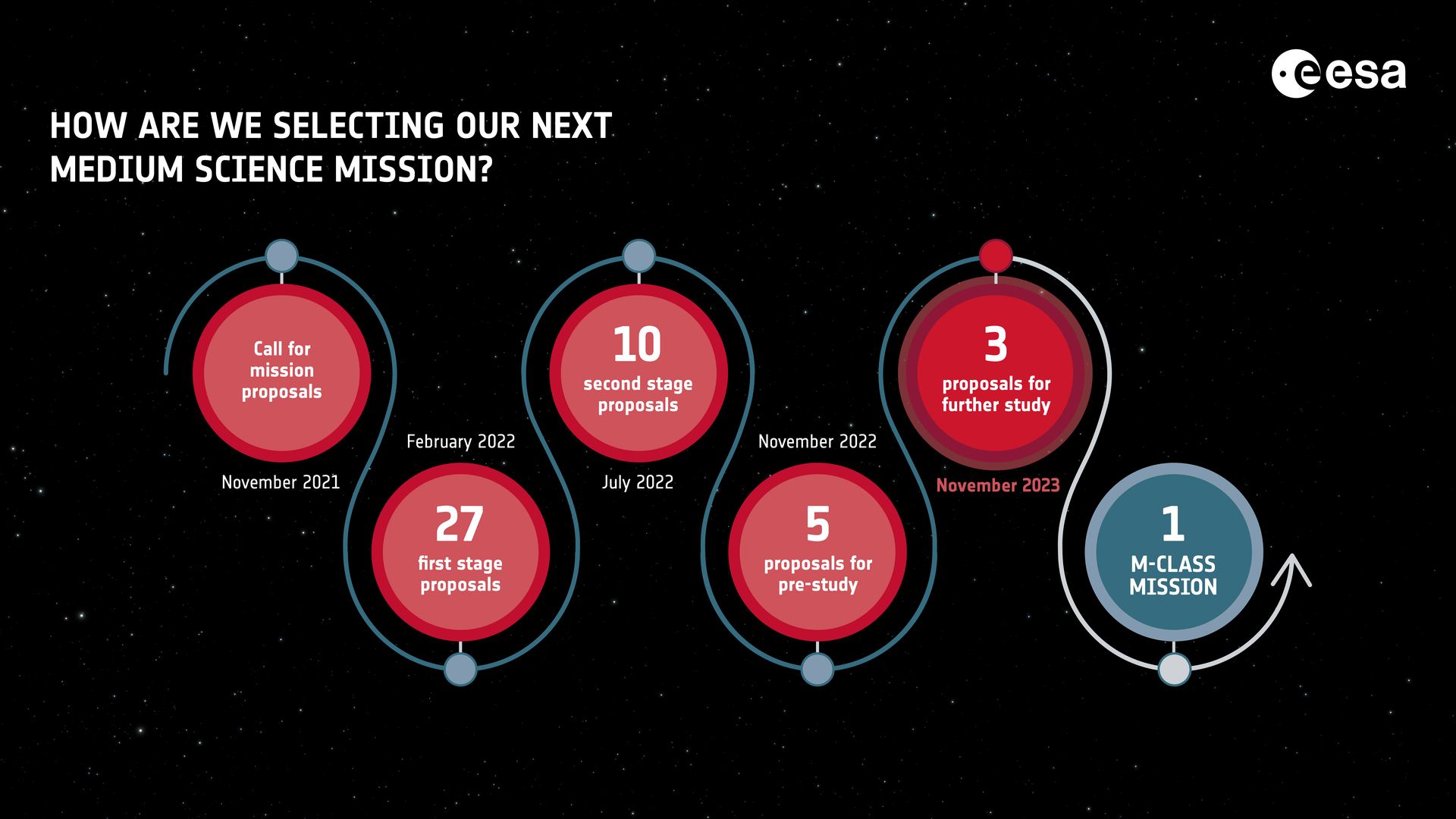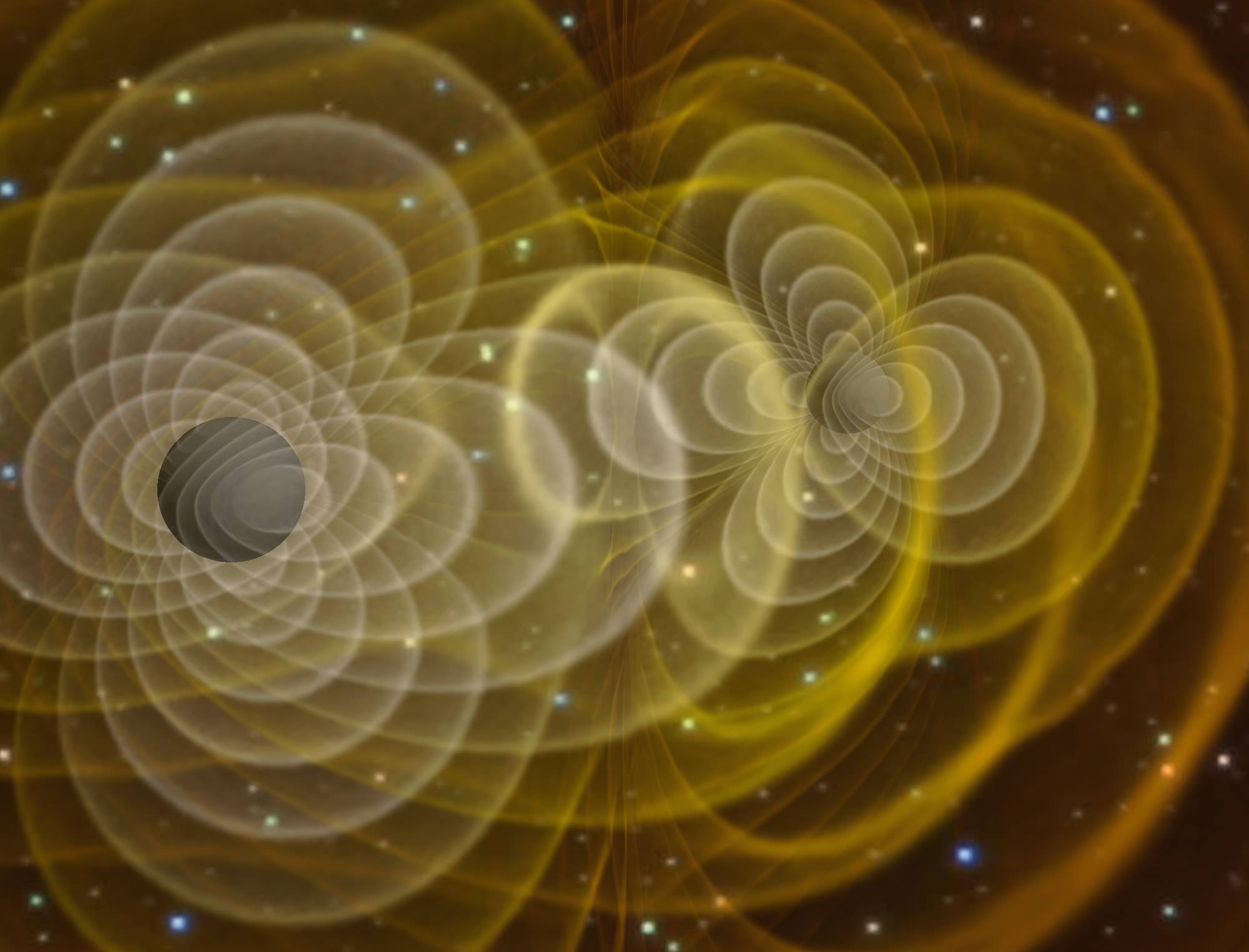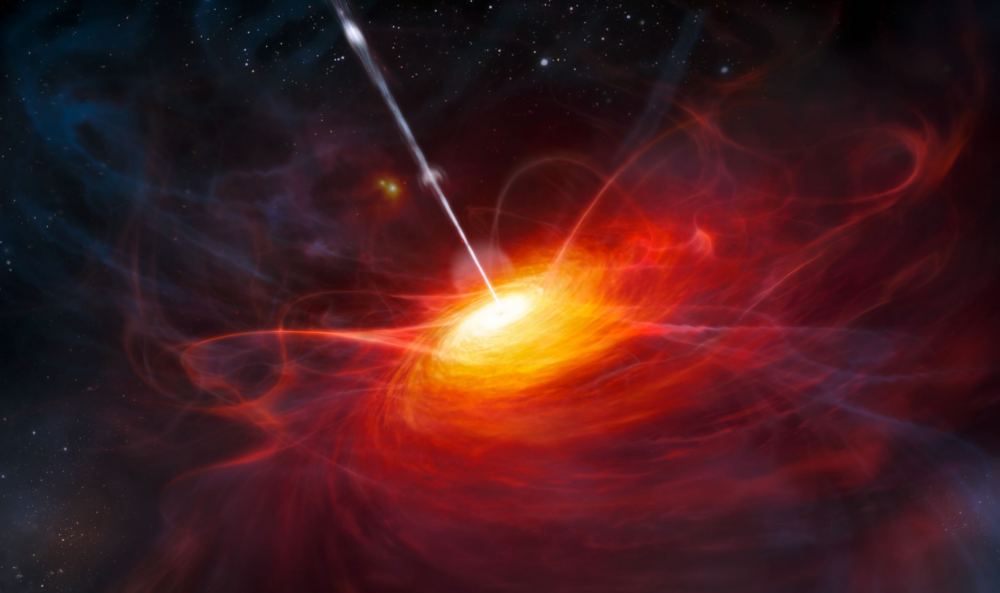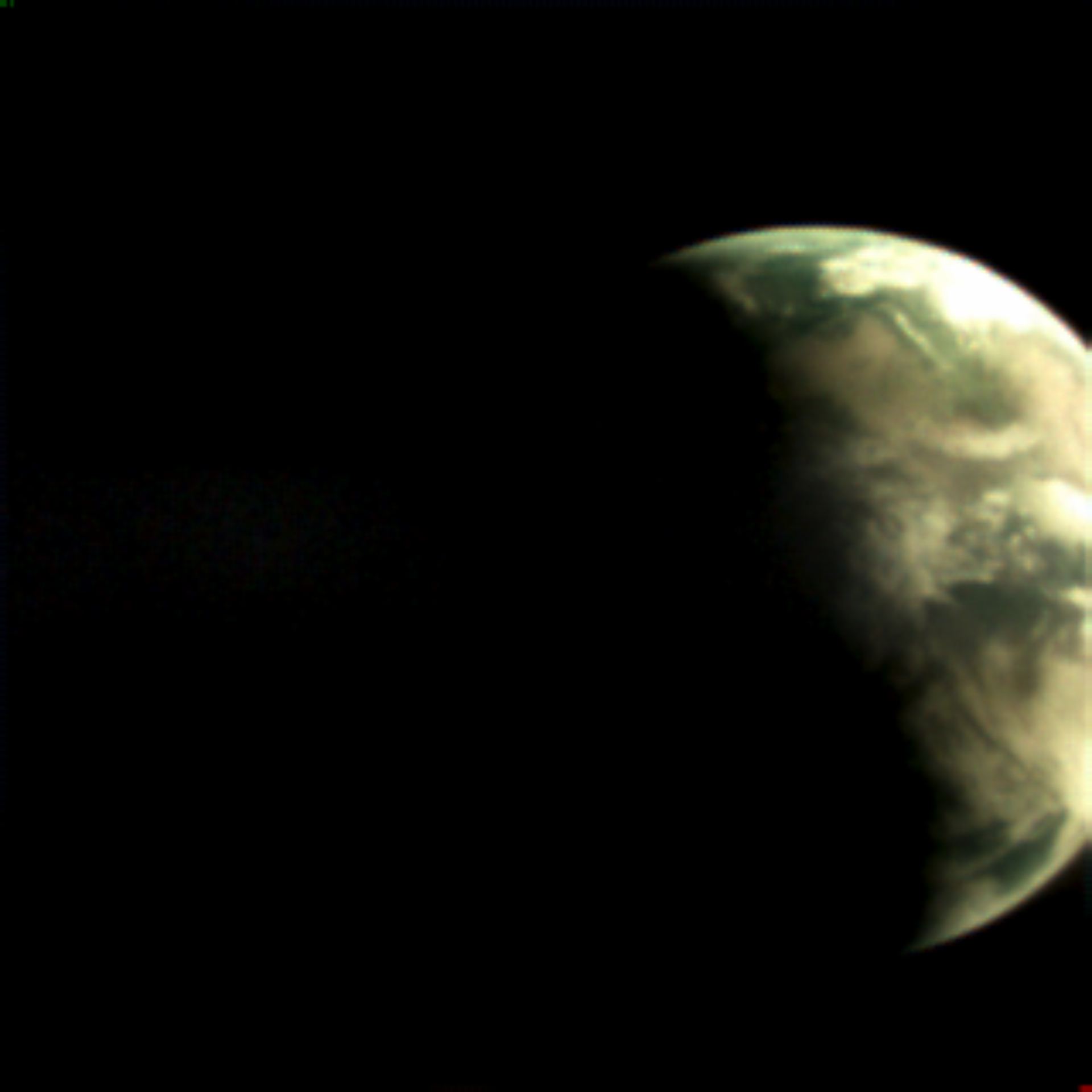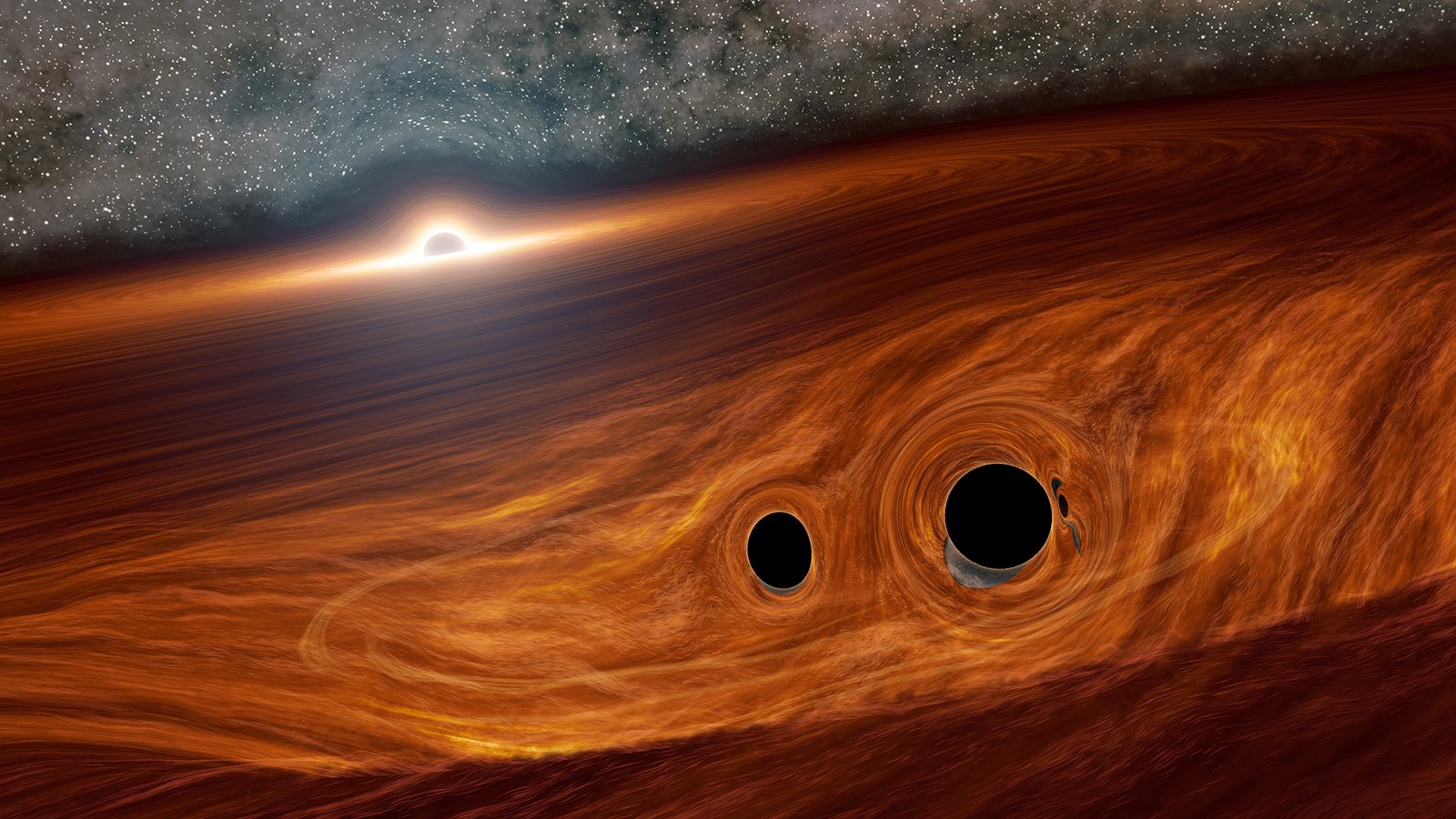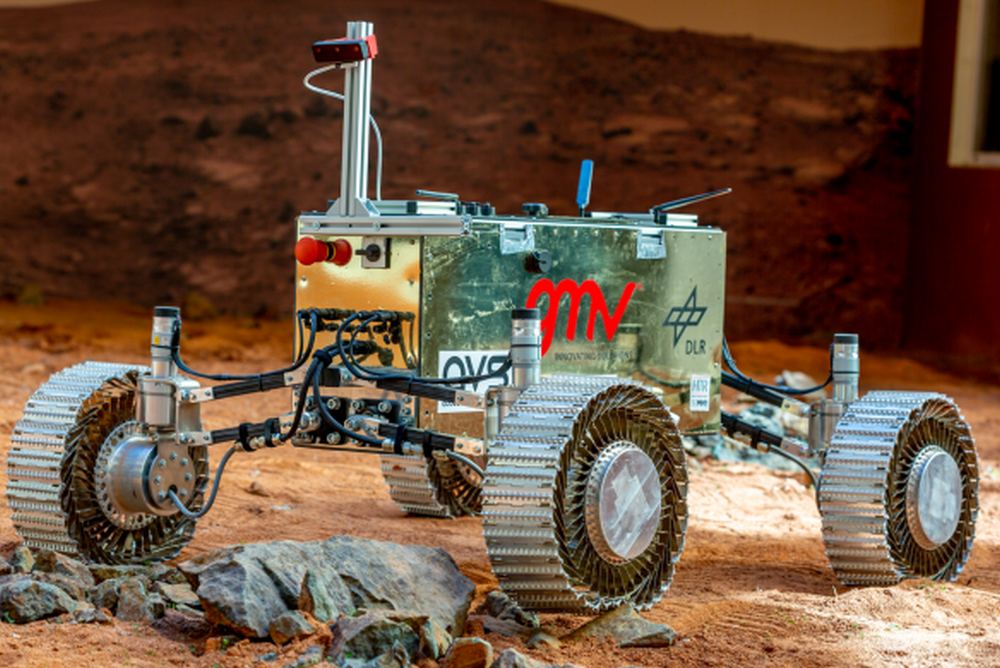What? Wow! That New Asteroid Image From Lucy Just Got Even More Interesting
When NASA's Lucy mission made its first flyby of asteroid Dinkinesh last week, it made the surprising discovery of a tiny moonlet. Well, hold onto your hats; a new picture from Lucy is mindblowing. That moonlet is two tiny moons gently resting side by side. This configuration is known as a contact binary, and it's very common in the Solar System, but we've never seen one up close like this and never orbiting another asteroid. If only Lucy could stick around.
Read the full story by Carolyn Collins Petersen
🦄 If you enjoy what we do at Universe Today, join our Patreon Club! Here are just some of the perks you can get by subscribing:
- I’ll remove all ads on UniverseToday.com for life, even if you unsubscribe in future
- You’ll get ad-free versions of our videos, so you won’t even have YouTube ads
- Early access to interviews, which we now do in improved quality
- A secret Patreon Email Newsletter
- Access to Patreon-only AMA session once per month
- Behind the scenes and other bonus content
- Help us stay independent and support the team directly
Support Universe Today. Join the Club Now!
INCREDIBLE Discovery From Lucy // Most Powerful Ion Engine // Slime Mold Universe
Lucy made an incredible discovery. One of the strangest exoplanetary systems ever seen. Understanding the Universe with slime mold. And the most powerful ion engine passes the test.
🎧 Subscribe to our podcasts:
- Universe Today Podcast. Space news, interviews, Q&As, and exclusive content from Universe Today.
- Astronomy Cast. Your weekly facts-based journey through the cosmos, which I co-host with astronomer Dr. Pamela Gay.
Upcoming Shows:
The Most Powerful Ion Engine Ever Built Passes the Test
Ion engines have been used on various spacecraft to achieve huge accelerations over long periods. The thrust is weak but added up over months and even years, and it's the most energy-efficient way to move around the Solar System. NASA is testing a more powerful ion engine called the Advanced Electric Propulsion System (AEPS) at the Glenn Research Center. It uses 12 kilowatts of power and will be installed on the Lunar Gateway to keep it in orbit near the Moon.
Read the full story by Laurence Tognetti
TESS Finds Eight More Super-Earths
NASA's Transiting Exoplanet Survey Satellite (TESS) has already discovered 400 exoplanets, with another 6,000 candidates awaiting confirmation. This week, astronomers announced some of those confirmations, including a huge batch of super-earths. These are worlds that range in size from 1.42 to 1.83 times the radius of Earth. There's nothing like these planets in the Solar System, and learning more about them will help us understand the evolution of exoplanetary systems.
Read the full story by Evan Gough
Civilizations Could Use Gravitational Lenses to Transmit Power From Star to Star
An extremely advanced civilization might want to send power from star to star across their galactic empire. How could they do this? A new paper suggests that it could be done with multiple gravitational lenses, focusing the energy from one star into a tight beam and then another receiving lens to receive the power. It would take much more advanced technology than anything we can do, but it might be another way to search for civilizations in the Universe.
Read the full story by Matt Williams
Searching for the Supernova Neutrino Background to the Universe
Right now, neutrinos are passing through your body from stars that detonated as supernovae halfway across the Universe. Don't worry; they're not dangerous, but they could be a key way to understand the cosmos, understanding how massive stars lived and died across eons. This is the "diffuse supernova neutrino background," and scientists still haven't detected it. New instruments are in the works that might make the first observations of this background by 2035.
Read the full story by Mark Thompson
Supermassive Black Holes Shut Down Star Formation During Cosmic Noon
Approximately 3 billion years after the Big Bang was a time of extreme star formation known as "cosmic noon." The combined radiation and particle emissions from stars, supernovae, and actively feeding supermassive black holes drove huge outflows of gas into the surrounding space, quenching star formation in other galaxies. A new survey from JWST of 119 galaxies in this era shows that the dominant outflows came from the actively feeding supermassive black holes.
Read the full story by Matt Williams
Roman Could Finally Tell Us if Primordial Black Holes Exist
When the Roman Space Telescope launches, it will see hundreds of microlensing events, turning up exoplanets and even rogue planets. One hope is that it might also detect the presence of low-mass black holes that could have only formed in the early Universe. If it finds enough of them, it could give conclusive proof that some part of dark matter is made up of primordial black holes as small as a millionth the mass of the Sun.
Read the full story by Evan Gough
JWST Detects Carbon Dioxide in a Centaur for the First Time
Centaurs are icy objects that orbit the Sun between Jupiter and Neptune. It's believed there are tens of thousands, and maybe even millions, of these objects in the Solar System larger than 1 km across. They remain in this region and don't venture into the inner Solar System like short- and long-term comets do. New observations of Centaur 39P/Oterma from JWST have revealed the presence of carbon dioxide gas emission for the first time. This object was discovered in 1943 and has shifted its orbit over time, becoming more active.
Read the full story by Laurence Tognetti
Get a Reality Check on Plans to Build Cities in Space
Hoping to retire on Mars? According to a new book from Kelly and Zach Weinersmith, you might want to keep other locations in mind. Although initially hoping to help explain our bold new Solar System-spanning future, they discovered that a Mars colony is unrealistic and undesirable. Mars is hostile to life, and we're looking at an extreme challenge to support the infrastructure to keep humans alive on the planet. Listen to the interview with Alan Boyle.
Read the full story by Alan Boyle
Amateur Astronomer Restores a Classic Historic Refractor
When Valts Treilbergs found a century-old refracting telescope in a university basement, he knew he had to restore it. Valts had already restored a series of Japanese refractors made between the 1940s and 70s, but this 100-year-old antique was a next-level restoration. This article from David Dickinson shows before and after pictures and details how Treilbergs completed the restoration.
Read the full story by David Dickinson
India Plans to Send Humans to the Moon by 2040
All eyes are on the Moon, with the US, China, Europa, and SpaceX planning human flights to the Moon in the coming decade. India has announced their plans to build a space station by 2035 and send humans to the Moon by 2040. India is already working on its crew capsule, "Gaganyaan," which will carry three astronauts into orbit. The capsule will undergo a series of test flights, and India hopes to put humans on board in an orbital test by late 2024.
Read the full story by Andy Tomaswick
How to Make Asteroid Landings Safer
OSIRIS-REx safely delivered its asteroid sample capsule back to Earth after briefly touching on Asteroid Bennu. Maneuvering in the low-gravity environment around asteroids and comets is surprisingly tricky (RIP ESA's Philae). A new paper has modeled the gravity field around irregular asteroids, developing trajectories allowing landers to reach their surfaces safely and improving soft-landing accuracy by two orders of magnitude.
Read the full story by Andy Tomaswick
Enceladus has All the Raw Materials for Life
The more we learn about Saturn's moon Enceladus, the more compelling a destination it becomes. New research from the Cassini Cosmic Dust Analyzer shows that the oceans of liquid water under the ice contain large amounts of inorganic phosphorus as well as ammonium, chemicals that can be used by life. For example, there are species of methanogen archaea that could thrive in this environment and could even be the source of some of these chemicals. We've got to go back!
Read the full story by Evan Gough
Astronomers are Hoping to Detect Gravitational Waves Coming From Supernova 1987A
In 1987, the closest supernova in modern times flashed in our skies. Even though it was in the Large Magellanic Cloud, 168,000 light-years from Earth, astronomers detected the light and neutrinos from the supernova 1987A. It would be decades before the first gravitational wave observatory would come online. Astronomers have searched through gravitational wave data to see if there's a continuous signal coming from the supernova remnant, a rapidly spinning neutron star.
Read the full story by Mark Thompson
Curiosity has Seen its 4,000th Martian Sunrise
I don't want to make you feel old, but it's been over 11 years since NASA's Curiosity Rover landed on Mars. The rover has seen the Sunrise on Mars over 4,000 times. During this time, it's driven almost 32 kilometers on Mars, making its way up the flanks of Mount Sharp, studying the ancient history of water on Mars. It hasn't been all perfect. Curiosity has been experiencing wear and tear on its wheels, and it recently got one of its camera filter wheels stuck.
Read the full story by Nancy Atkinson
Astronauts Could Wear a Device to Prevent Disorientation in Space
There's no up or down in space, so it's easy to get disorientated. Even with special training, astronauts can get turned around, and the risks could be deadly. Engineers are testing a wearable device that astronauts could wear to give them haptic feedback based on their orientation. In a recent experiment, volunteers were spun around but could use vibrations from their artificial sense of balance to reorient again.
Read the full story by Laurence Tognetti
Things to See Before You Die, Reigniting A Dead Star, Types of Black Holes | Q&A 237
How do we know that Psyche is a metal asteroid? Did primordial gravitational waves stretch when inflation happened? When do we finally get more Trappist-1 data from JWST? Can a dead star possibly reignite?
Dimorphos is Probably a Piece of Didymos
When NASA's DART mission slammed into the asteroid moon Dimorphos, it created a giant cloud of ejecta that astronomers could study with various telescopes. Infrared observations of the material revealed that it matches the chemical composition of the larger asteroid Didymos. This supports the theory that Dimorphos was once a part of Didymos. The rotation rate of the asteroid increased over eons, eventually splitting it up into a larger asteroid and its moon.
Read the full story by Scott Alan Johnston
Juno Spots Salts and Organic Molecules on Ganymede's Surface
When NASA's Juno mission flew past Jupiter's moon Ganymede in 2021, it returned some of the most detailed images of the world ever taken. Planetary scientists have been studying the images and discovered mineral salts and organic compounds on its surface. During its flyby, Juno came within 1,046 km of the surface of Ganymede, resolving features smaller than 1 km/pixel. They found the greatest abundance of salts and organics in the regions protected by its magnetosphere.
Read the full story by Matt Williams
This is a First. An Exoplanet in a Polar Circumbinary Disc Surrounding Two Stars.
Once again, the Universe reveals how bizarre it can be. A binary star system called AC Her appears to have a planetary disk that orbits in a polar orbit around both stars. The two stars are located almost three astronomical units, while the planetary disk is inclined almost perpendicular to the stars. Although planets have been found on polar orbits before, and circumbinary planets have been found, this is the first time we've seen this combination.
Read the full story by Evan Gough
Oops. Astronauts Lost a Tool Bag During a Spacewalk!
Earth gained a new satellite this week - an escaped astronaut tool bag. Astronauts Jasmin Moghbeli and Loral O'Hara were on a 6+ hour spacewalk this week, working on equipment outside the International Space Station. During the spacewalk, flight controllers noticed a tool bag floating in space. NASA confirmed that the astronauts and station aren't in any danger, and the bag won't come back in the future.
Read the full story by Mark Thompson
What Can Slime Mold Teach Us About the Universe?
At the largest scales, the Universe resembles the growth of slime molds, which generate highly interconnected networks when searching for food. This behavior has been used in a variety of sciences, and it also applies to simulations of the cosmos. Researchers evaluated one of the most comprehensive simulations of the Universe ever made, IllustrisTNG, and compared the growth of large-scale galactic structures to slime mold feeding patterns.
Read the full story by Evan Gough
How Einstein's Daydream of Light Created Relativity
Dr. Paul Sutter explains in this fascinating article how Einstein's obsession with light led him to discover Relativity. He wondered what would happen if you could ride a bicycle so fast that you raced beside a light beam. What would you see? Your instinct is that you should see the light frozen as you matched its speed, but Einstein knew that was a paradox, that light demanded constant motion. Since light could never stop, time itself had to change.
Read the full story by Paul M. Sutter
Astronomers Find Dozens of Massive Stars Fleeing the Milky Way
A surprisingly large percentage of massive stars in the Milky Way are hightailing it out of our galaxy. Do they know something we don't? Maybe they got kicked out when their binary partner exploded as a supernova. A new survey of massive O and Be stars found over 170 on an escape trajectory from the Milky Way; almost 100 were newly identified. This could mean that a staggering 25% of O stars are on escape trajectories, with over 5% of Be-type stars heading out, too.
Read the full story by Evan Gough
The LIFE Telescope. Next Gen Planet Hunter
You asked for it, so it's here. A big interview about a proposed mission called LIFE that could help us revolutionise planet hunting. My guest is Dr Daniel Angerhausen from EHT Zurich.
ESA Plans to Eliminate New Space Debris by 2030
Space junk is a growing problem in low-Earth orbit, with over 130 million pieces of debris larger than a millimeter orbiting Earth. These impact satellites and other debris, creating even more debris, and if something isn't done, more and more damage will be done to our existing orbital infrastructure - even risk the lives of astronauts. ESA released a new plan to dramatically reduce the production of new debris in Earth and Lunar orbit, aiming for zero debris by 2030.
Read the full story by Evan Gough
ESA Has a Difficult Choice: Study Mars, Earth's Magnetosphere, or Gamma-Ray Bursts
The European Space Agency started with 27 proposals for its next M-class mission, due for launch in the mid-2030s. After reviewing the missions, they winnowed the list down to ten, then five, and now they're down to three. The choice is between M-Matisse, which would study Mars with spacecraft, the seven-spacecraft Plasma Observatory to study Earth's magnetosphere, and Theseus to look at gamma-ray bursts. One mission will be chosen by mid-2026
Read the full story by Matt Williams
Some of the Moon's Craters are From Interstellar Impacts. Can We Tell Which?
By discovering two interstellar objects, we know that asteroids and comets from other star systems are passing through the Solar System. Some of these must have crashed into the Moon, causing craters. If we could study the impact sites, we might be able to learn about the star systems that they came from. A new paper suggests there could be a way to determine which lunar craters came from interstellar object impacts.
Read the full story by Nancy Atkinson
Is Anything Absolute With Relativity?
You've heard the phrase, "everything's relative." But is that really true? Is there no place or time in the Universe that everything is measured against? According to Newton, everything in the Universe must interact with a fixed, absolute frame of reference, but Einstein discovered that space and time are inextricably linked. There's no universal frame of reference, and you can only judge motion by the relative viewpoints of every observer.
Read the full story by Paul M. Sutter
Sometimes Compact Galaxies Hide Their Black Holes
Astronomers are finding supermassive black holes at the hearts of most galaxies, but a donut of gas and dust can obscure the region close to the galaxy's center. Now astronomers are realizing that some galaxies are filled with so much of this dust that they can hide their black holes entirely. These are classified as "starburst galaxies," which can form more than 1,000 sunlike stars yearly. Star formation churns up the gas and dust, obscuring the black hole from view.
Read the full story by Matt Williams
Trisat-R's 2-mm Camera Took This Picture of the Earth From 6,000 Km Away
Another new picture of Earth. This photo is interesting because it was taken with a camera with a 2-mm lens from a distance of 6,000 km. The camera is onboard a Slovenian CubeSat called TRISAT-R, launched last year on the first Vega-C rocket. These cameras weren't designed to take pictures of Earth but to demonstrate tiny radiation-hardened cameras in space. The camera uses a lens of clear borosilicate glass mounted onto a 320x320 pixel image sensor.
Read the full story by David Dickinson
If We Could Find Them, Primordial Black Holes Would Explain a Lot About the Universe
As far as we know, black holes can only be formed by the death of massive stars, but a persistent theory says that black holes of all masses could have formed directly in the early Universe. These primordial black holes would help explain several mysteries in astronomy: outlier mergers of black holes, dark matter, and young supermassive black holes. How are they different from stellar mass black holes, and what upcoming instruments could detect them?
Read the full story by Brian Koberlein
ESA is Testing a Modular Multipurpose Rover That Could Be a Science Lab or a Tiny Bulldozer
With more missions headed to the Moon, settling on standard lunar rover hardware makes sense. The European Space Agency is testing a modular multipurpose rover for future complex missions to the Moon. These rovers could be equipped with various scientific payloads or attachments to help them accomplish tasks. Various rover versions have been tested in simulated lunar environments on Earth to see how they perform in various tasks.
Read the full story by Evan Gough
Other Interesting Space Stuff
- Where are All the Double Planets?
- Growing Black Hole Seen Only 470 Million Years After the Big Bang
- The First Color Pictures From Euclid
- How NASA Keeps Ingenuity Going After More than 50 Flights
- Applying Centrifugal Propulsion to Enable Asteroid Deflection
- Seismic Assessment of a Long-Term Lunar Habitat
- NASA Wants to Learn to Live Off the Land on the Moon
- JWST Shows Ice-Covered Pebbles Delivering Water to New Planets
- Dark Matter Could Help Solve the Final Parsec Problem of Black Holes
- For its Next Trick, Gaia Could Help Detect Background Gravitational Waves in the Universe
- An Amateur Astronomer Discovered One-of-a-Kind Supernova Remnant
- The Past and Future Habitability of Earth Depends on Our Protection from Space Weather
- SETI Researchers Just Got a $200 Million Gift to Search for Life
- Japan Tests Robotic Earth-Moving Equipment in a Simulated Lunar Jobsite
- Mystery Solved. How We Get Ultra-Compact Dwarf Galaxies
- Need to Map an Iceberg in a Hundredth of a Second? Ask a Computer
- An Epic Collaboration Between Hubble and JWST
- The Lunar Swirl Mystery Deepens
- The Early Universe Had No Problem Making Barred Spiral Galaxies
- China Wants to Retrieve a Sample of Mars by 2028
- PIA26202: Perseverance's Parking Spot During Conjunction
Thanks!
Fraser Cain
Publisher
Universe Today
As always, if you have comments or questions, or suggestions on how I can improve this newsletter, please don't hesitate to reply this email or email me at [email protected].

This work is licensed under a Creative Commons Attribution 4.0 International License.
Click here to Unsubscribe from this list.
Universe Today - #3400 333 Hunt Road - Courtenay, BC V9N 3R6 - Canada

